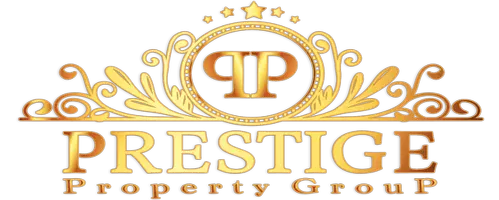You Left Your House to Your Kids—but What Happens Next Could Look Like a Game of ‘Survivor’ if You’re Not Careful
Picture this: Three adult siblings stand in their late parents' dining room. They're eyeing the table where they ate meals while growing up, each remembering a different "promise" their mother made about who would inherit it. One sibling has already removed several items from the bedrooms. Another is questioning why the china cabinet should go to their brother when he's already getting Dad's old record collection.
As a parent, you spent years carefully planning who would inherit your house. You consulted attorneys, set up trusts, made sure the property transfer would be smooth. But what about everything that makes your house a home? The furniture, artwork, jewelry, photo albums, and family heirlooms that fill every room?
Without a clear plan for your home's contents, even the closest families can find themselves in a "Survivor"-style scenario—forming alliances, strategizing over limited resources, and competing for items that represent far more than just money. The house itself may be your biggest asset, but the battle over what's inside can tear relationships apart.
Why ‘stuff’ causes so much conflict
The home is likely the most valuable asset you’ll leave to your heirs. But there are lots of other opportunities for conflict to arise through what’s inside the home, and money sometimes has little to do with it.
"What I've learned through years of mediating family disputes is that the conflict rarely starts with the stuff itself," says Kim Best, a dispute resolution expert and founder of Best Conflict Solutions. "It is about what the stuff represents and the story each family member tells themselves around their relationship with the deceased."
The disconnect is stark: Real estate transfers get extensive documentation—deeds, titles, legal descriptions. But the contents of that home? Often, there's nothing in writing, just assumptions, old sibling dynamics, and competing memories of what Mom or Dad supposedly promised.
Common scenarios include one child insisting they were promised the painting in the living room, another arguing that a $5,000 jewelry collection should count more in the division than a $500 heirloom quilt (ignoring the quilt's sentimental value). And then there's the "first one there" problem when someone clears out the house before the estate is properly settled. This is often the result of a lack of communication and preparation.
"Families avoid these conversations because they're uncomfortable, because talking about death feels morbid, because parents worry about appearing controlling or children fear seeming greedy," Best explains. "So nothing gets said, nothing gets documented, and when the time comes, everyone is operating from assumptions, old wounds, and surprise."
Unlike the house itself—which can be sold and the proceeds split evenly—many of these items are not divisible, and traditional methods like drawing lots or taking turns don't account for how intensely different people value different items.
Consider methods for fair distribution
Estate planning professionals have developed several strategies to help families divide household contents more equitably, such as an auction system or a round-robin selection. One gaining traction is the weighted voting system, recently outlined by Matthew F. Erskine, a trusts and estates attorney, in Forbes.
Here's how weighted voting works: Each heir receives an equal number of "votes"—say, 100 points—to distribute among the items in the home however they choose. If one sibling desperately wants Mom's piano, they can allocate 90 points to it. Another might spread their points across multiple items they value equally. The person who assigns the most points to each item wins it.
“Fair-sharing strategies like a family auction or a weighted voting system can turn what could be a painful process into a collaborative one,” says Trace Brooks, managing attorney at Brightside Estate and Elder Law.
That said, Brooks notes that these systems are what you would do in the absence of a well-communicated plan.
“These relatively complicated systems are far less effective, and much more costly and time-consuming, than comprehensive planning and clear communication from the property owner,” he says.
The most effective approach combines these practical tools with open family conversations about expectations and what fairness means to each person. "We're facilitating conversations that need to happen while everyone is still alive and capable of expressing what matters and why," Best says. "When adult children can ask questions instead of guessing—that's when we prevent the disputes that tear families apart later."
Creating your inventory and protecting value
Before any distribution system can work, you need to know what you have.
The first step is documenting what you actually own. Walk through your home and catalog everything with meaningful financial or sentimental value, from furniture and jewelry to artwork, tools, and family heirlooms. Be specific in your descriptions so there's no confusion later about which chair or which pair of earrings you meant.
Don't rely on written descriptions alone. Take photographs or videos of each item, capturing their current condition. This visual record becomes crucial for insurance purposes and helps prevent disputes about an item's quality or authenticity. For anything particularly valuable—antiques, fine art, collectibles, or precious jewelry—bring in a certified appraiser to establish fair market value.
Store this inventory with your other estate planning documents, treating it as seriously as your will or living trust. Make updating it an annual habit, or whenever you acquire or part with significant items. Your executor and successor trustee should have copies well before they need them, so they're not scrambling to piece together what you owned and where it all went.
This documentation and help from an appraiser also protects heirs from the repercussions of quick decisions.
"Families also lose surprising value when they rush to donate or sell contents without appraisal,” says Brooks. “Everyday items can have meaningful resale or sentimental worth when handled thoughtfully.”
Turn sentimental guesswork into legal certainty
Once you've created your inventory and decided on a distribution method, make it legally binding. Beyond determining who inherits the house itself, document your chosen method for distributing its contents in your estate planning documents.
A memorandum of personal property—a legal document available in many states—allows you to specify who gets what from your home. The advantage: It's updatable without redrafting your entire will. You can reference it room by room and revise it as your possessions change.
Include tiebreaker procedures for any distribution system you choose, and grant your executor clear authority to sell remaining household items. Consider the timing: Will the home be sold first, with heirs dividing contents off the premises? Or will the house not be put up for sale until after personal property distribution? You should work with an estate planning attorney to ensure your plan complies with your state's probate laws.
"Planning ahead is a gift that we give ourselves and the people we leave behind," Best says. "If we're leaving, we're designing the experience we want to have, rather than leaving decisions to chance."
Your home may be your biggest financial asset, but what's inside holds memories that can't be appraised or replaced. Both the property and its contents deserve the same careful planning and documentation. The goal isn't just equitable distribution of possessions—it's ensuring your home's legacy preserves the family relationships you spent a lifetime building.
Don't let the home you lovingly maintained become a source of conflict after you're gone. Unlike in “Survivor,” when it comes to your heirs, there shouldn't be a sole winner at the end of this game. Have the conversations now, create the inventory, choose a fair distribution system, and formalize it legally. Your children will thank you for it.
Categories
Recent Posts










GET MORE INFORMATION

